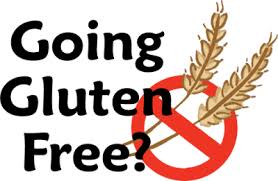 Should you eat gluten free if you don’t have to?
Should you eat gluten free if you don’t have to?
You see it everywhere, gluten free this, gluten free that. It seems like everyone is eating gluten free these days, but should you? It all depends.
Do you have celiac disease or are you gluten intolerant? If so, the answer is yes. When people with celiac disease eat gluten, their body sees gluten as the enemy and is fighting it, it destroys the villi, the finger-like projections lining the intestines. Without healthy villi, the body is not able to absorb necessary nutrients or vitamins and a host of side effects may ensue, including gastrointestinal issues, anemia, infertility, slow growth, osteoporosis, dental issues, and even cancer.
Do you think you have celiac disease but haven’t been diagnosed? Stop. Make an appointment with your doctor and rule out the diagnosis while you’re still eating wheat. Once you stop eating gluten, any future tests for celiac disease will be inconclusive. Remember, the disease is genetic, so if you have it, your kids might too.
Do you take your vitamins? Wheat products are usually enriched with B vitamins (thiamin, riboflavin, niacin and folic acid) and iron, but gluten-free products are not. So if you’re eating gluten free, you’ll need to increase your intake of foods containing those nutrients, like quinoa, fish, and spinach, or start taking supplements.
Are you trying to lose weight? If so, you may want to avoid gluten. Just don’t replace the wheat bread and processed foods with the gluten-free versions. People on a gluten-free diet often gain weight, the result of eating highly processed sugary and fatty foods. Many gluten-free products are higher in fat and sugar and lower in fiber than their gluten counterparts. These gluten-free foods are made with what Dr. William Davis, author of “The Wheat Belly Diet,” calls “junk carbohydrate ingredients.” That is, corn flour, rice flour, potato starch, and corn starch, all products which raise blood sugar even higher than wheat.
Are you on a tight budget? If so, think again. Processed gluten-free foods are expensive. Plan on spending over $5 for one loaf of gluten-free bread, about $6.50 for 2 pounds of gluten-free flour, and an extra fee (typically $5 on top of the regular price) for gluten-free pizza when dining out.
Are you ready to give up gluten in social settings? Have you noticed that wheat is in everything and is everywhere? Wheat is in the obvious (bread, crackers, cereals, pastries, cookies, cakes, pie) and in the hidden (soup, soy sauce, teriyaki sauce, gravy, sauces, flavored coffees, some ice cream, and many snacks). Are you prepared to avoid most of the food on buffets at holiday and family gatherings?
If you still think you want to try eating gluten free, than do what Dr. Davis recommends. “Eat real, natural foods such as eggs, raw nuts, plenty of vegetables, and fish, fowl, and meats. Use healthy oils like olive, walnut, and coconut liberally. Eat occasional fruit and plenty of avocado, olives, and use herbs and spices freely. Eat raw or least cooked whenever possible and certainly do not frequent fast food, processed snacks, or junk foods.”
Guest Blogger: Tara Taft is the editor of the newsletter for the Boston Children’s Hospital’s Celiac Support Group.

